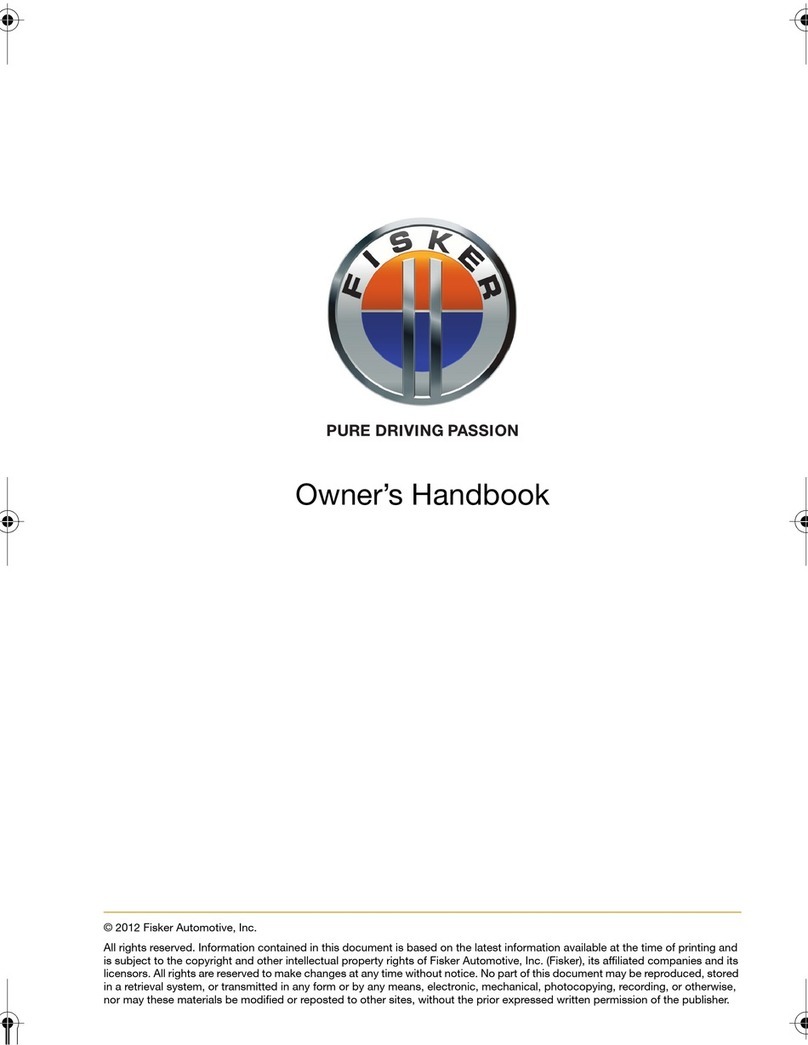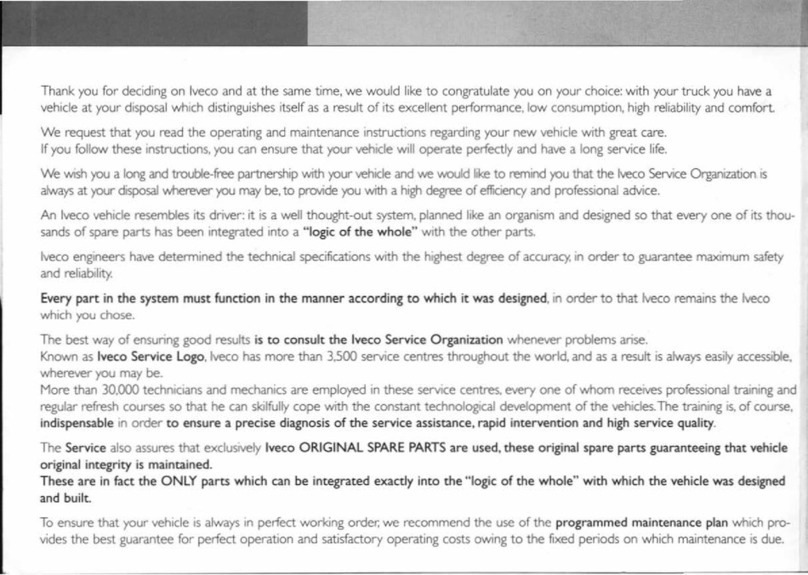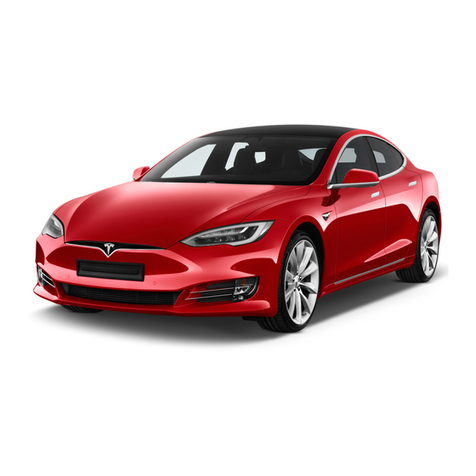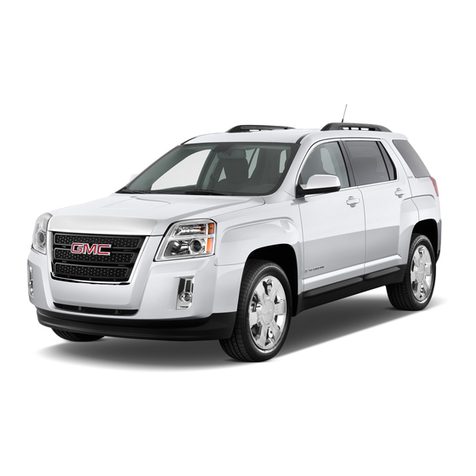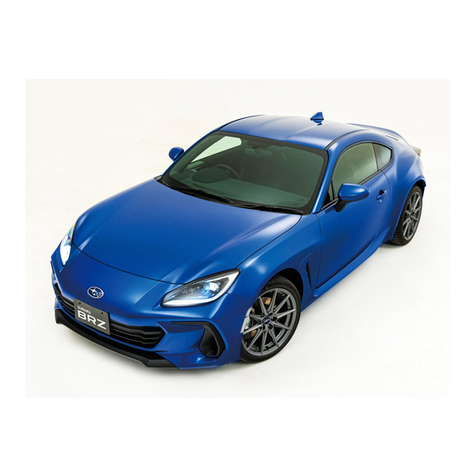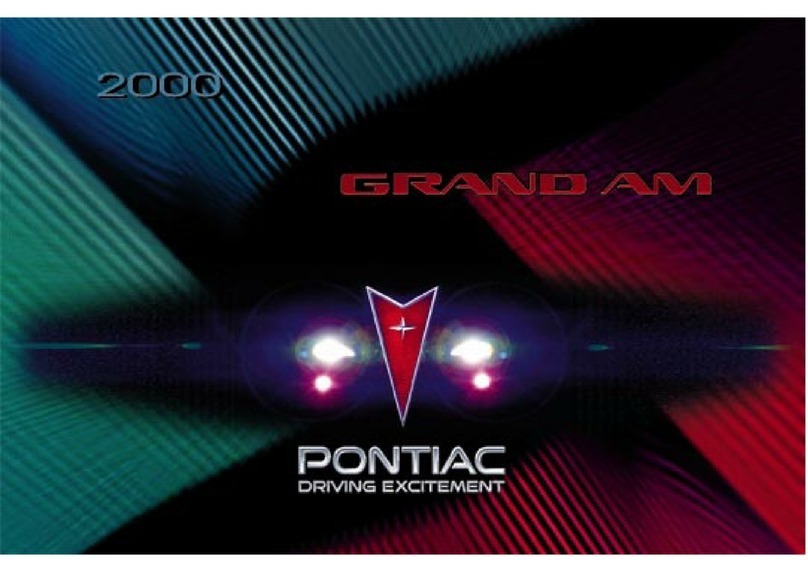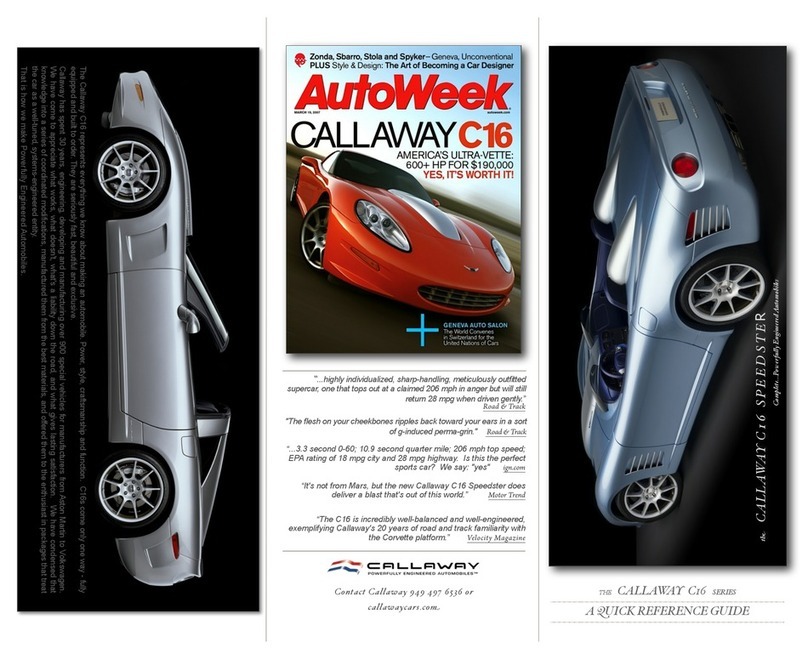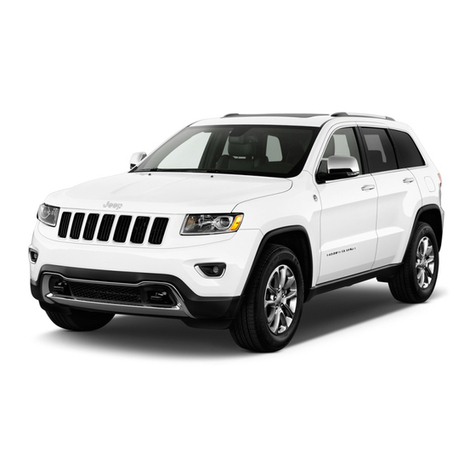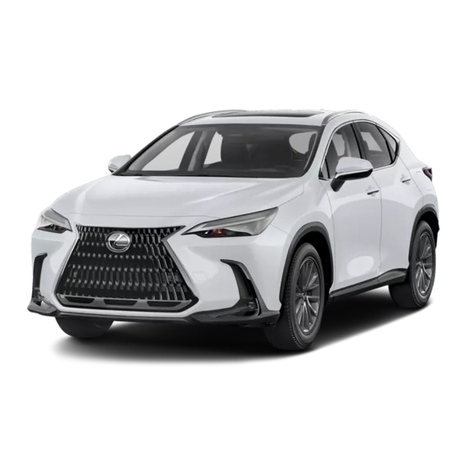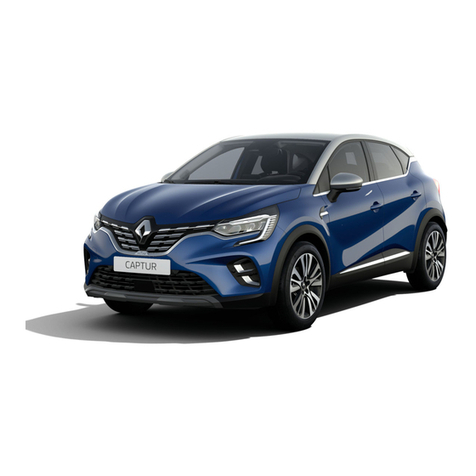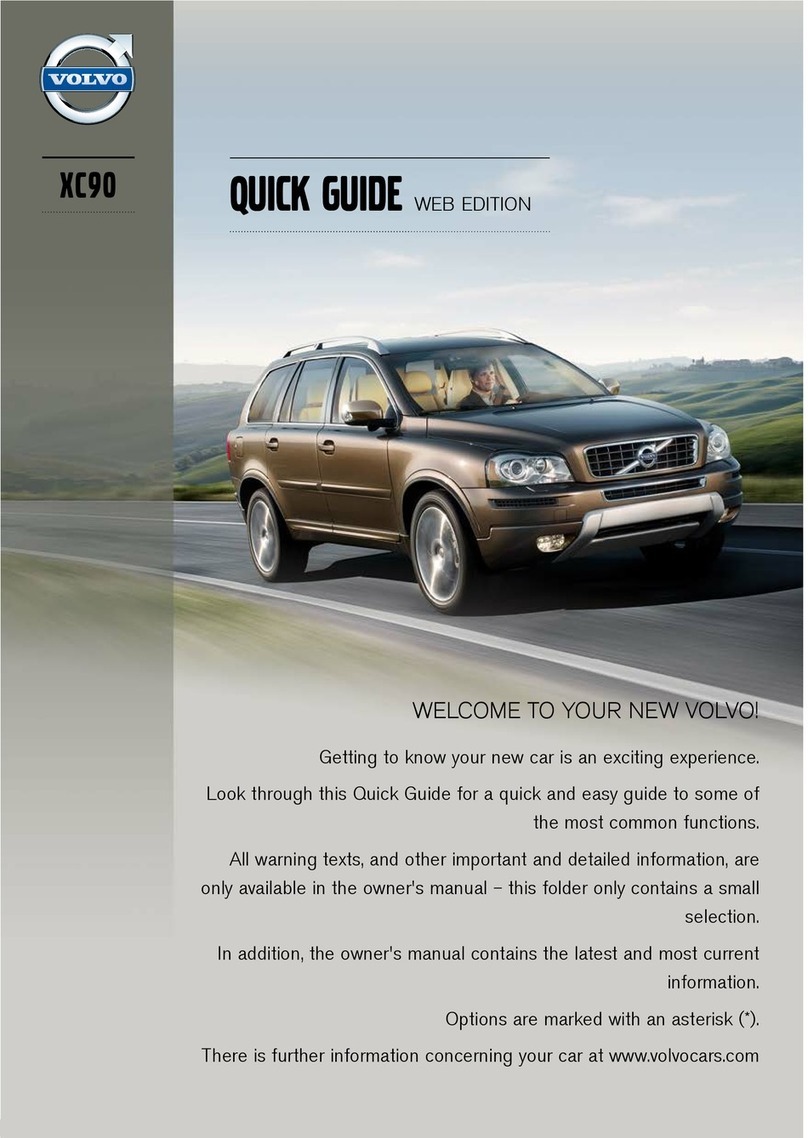Fisker OCEAN ELECTRIC User manual

FISKER
INFORMATION FOR FIRST AND SECOND RESPONDERS
EMERGENCY RESPONSE GUIDE
OCEAN
ELECTRIC

©2023 Fisker Inc. All rights reserved.
All information in this document is subject to copyright and other intellectual property
rights of Fisker Inc. and its affiliates. This material may not be modified or
reproduced, in whole or in part, without the prior written permission of Fisker Inc. or its
affiliates. Unless otherwise indicated, all trademarks are owned and registered to
Fisker Inc.
The information provided in this document are for illustrative purposes only and may
differ from the product.

Contents
1
Introduction 5
Important Safety Instructions..................................................................................................................... 5
About This Guide ................................................................................................................................................ 5
On Vehicle References.................................................................................................................................. 5
Symbols Glossary.............................................................................................................................................. 6
1. Identification / Recognition 7
Exterior........................................................................................................................................................................ 7
Interior.......................................................................................................................................................................... 8
Vehicle Identification Number (VIN)..................................................................................................... 9
High-Voltage Components....................................................................................................................... 10
High-Voltage Warning Labels.................................................................................................................. 11
High-Voltage Battery ..................................................................................................................................... 12
12-Volt Battery...................................................................................................................................................... 13
High-Voltage Cables..................................................................................................................................... 15
Drive Motors.......................................................................................................................................................... 16
Airbags..................................................................................................................................................................... 17
Seat Belt Pre-Tensioners............................................................................................................................ 18
2. Immobilization / Stabilization / Lifting 19
Identifying the Power ON/OFF Status.............................................................................................. 19
Powering On........................................................................................................................................................ 20
Powering Off........................................................................................................................................................ 21
Shifting Into Neutral ........................................................................................................................................ 22
Applying the Electronic Parking Brake (EPB)............................................................................ 23
Chocking the Wheels.................................................................................................................................... 25
Lifting Points......................................................................................................................................................... 26
3. Disable Direct Hazards / Safety Regulations 27
Required Equipment ..................................................................................................................................... 27
Before Disabling the Power System................................................................................................. 28
Disconnecting the Charge Cable....................................................................................................... 29
Disabling the High-Voltage System .................................................................................................. 30
Disabling the 12-Volt System.................................................................................................................... 31

2
Contents
4. Access to the Occupants 33
Key Fob.................................................................................................................................................................... 33
Opening Doors from the Outside........................................................................................................ 34
Opening Doors without Power ............................................................................................................. 35
Power Windows............................................................................................................................................... 36
Hood.......................................................................................................................................................................... 37
Adjusting the Front Seats........................................................................................................................... 39
Adjusting the Steering Wheel ................................................................................................................. 40
Cutting the Vehicle........................................................................................................................................... 41
5. Stored Energy / Liquids / Gases / Solids 45
Batteries ................................................................................................................................................................. 45
Vehicle Fluids ..................................................................................................................................................... 46
6. In Case of Fire 47
Vehicle Fires........................................................................................................................................................ 47
7. In Case of Submersion 49
Submerged Vehicles.................................................................................................................................... 49
8. Inspection / Transportation / Storage 51
Inspection Recommendations............................................................................................................... 51
Potential Hazards............................................................................................................................................. 51
Inspection Items................................................................................................................................................ 52
After Inspection................................................................................................................................................. 53
Moving Off the Road...................................................................................................................................... 54
Vehicle Weights................................................................................................................................................ 56
Preparing the Vehicle for Transportation..................................................................................... 57
Transporting the Vehicle............................................................................................................................ 58
Pulling the Vehicle onto a Trailer or Transporter..................................................................... 59
Recovering the Vehicle From a Ditch................................................................................................ 61
Securing the Vehicle for Transportation........................................................................................ 62
Storing Damaged Vehicles ..................................................................................................................... 63
Isolation Methods ............................................................................................................................................ 63

Contents
3
9. Important Additional Information 65
AVAS (Acoustic Vehicle Alerting System) .................................................................................... 65
10. Explanation of Pictograms Used 67
Key............................................................................................................................................................................... 67

4
Contents

2022 Fisker Ocean
1. Introduction
5
IntroductionIntroduction
Important Safety Instructions
This guide describes first response operations and important safety-related
warnings that must be followed when handling this vehicle in an emergency
situation.
This electric vehicle is equipped with a high-voltage battery pack. Failure to follow
recommended practices during emergency responses can cause death or serious
personal injury.
Please read this guide in advance to understand the features of this vehicle and to
help you deal with incidents involving this vehicle. Follow the procedures to help
ensure a safe and successful first response operation.
About This Guide
This guide covers the Fisker Ocean vehicle for models manufactured in 2022 or
newer.
On Vehicle References
The terms Right or Left refer to the driver’s right or left while sitting in the vehicle.
The following cautionary symbols may be found on labels throughout the vehicle.
Symbol Definition
Warning
Risk of electric shock; use
caution
Refer to the service
manual

6
1. Introduction
2022 Fisker Ocean
Symbols Glossary
The following symbols used within this manual call your attention to specific types
of hazards and what to do to avoid or reduce them.
DANGER: Indicates a hazard with a high level of risk which will result in serious
injury or death.
WARNING: Indicates a hazard that could result in injury or death
CAUTION: Indicates a hazard that could result in property or vehicle damage

2022 Fisker Ocean
1. Identification / Recognition
7
Identification / RecognitionIdentif ying the Ocean
Exterior
The exterior of the Ocean can be distinguished by its unique badging on the front
and rear.

8
1. Identification / Recognition
2022 Fisker Ocean
Interior
The Fisker Ocean can be identified from the interior by its unique dashboard layout
and instrument cluster display screen.

2022 Fisker Ocean
1. Identification / Recognition
9
Vehicle Identification Number (VIN)
This legal identifier is in the front corner of the instrument panel. It can be viewed
from outside the vehicle.
The fifth digit of the VIN represents Trim Series, and the sixth digit of the VIN
represents powertrain
5th Digit = Trim Series 6th Digit = Powertrain Type
S: Sport A: SBP/SM/FWD
U: Ultra B: LBP/DM/AWD
E: Extreme
Z: Ocean One

10
1. Identification / Recognition
2022 Fisker Ocean
Electrical System Informatio n
High-Voltage Components
1. Power distribution unit
2. PTC heater (cabin)
3. High-voltage cables
4. Photovolatic integrated unit (if equipped)
5. AC Power Outlet
6. Rear drive unit (if equipped)
7. High-voltage battery
8. Charging port
9. PTC heater (high-voltage battery)
10. AC compressor
11. Front drive unit

2022 Fisker Ocean
1. Identification / Recognition
11
High-Voltage Warning Labels
WARNING: All high-voltage components are labeled but due to their
placement in the vehicle, not all labels may be visible. Always wear
appropriate PPE (Personal Protective Equipment) when cutting the vehicle. Failure
to do so can result in death or serious injury.
Illustrated above is an example of the high-voltage warning labels that can be
found on high-voltage components within the vehicle. These labels are one way to
quickly identify potential electrical hazards. For your safety, always follow all
cautions and instructions on warning labels.
Labeled high-voltage components include (but are not limited to):
•High-Voltage (HV) Battery
•Power Distribution Unit (including On-board Charger and DCDC converter)
•Front Electric Drive Unit
•Rear Electric Drive Unit (if equipped)
•PTC heater (for HV battery)
•PTC heater (for cabin)
•High-Voltage AC Compressor
•Charging socket/port
•Photovoltaic Integrated Unit (PVIU) (If Equipped)
•High-Voltage Cables (can be distinguished by orange color)

12
1. Identification / Recognition
2022 Fisker Ocean
High-Voltage Battery
The high voltage (HV) lithium-ion battery is mounted under the vehicle floor.
When using lifting or rescue tools, use caution and never breach the high-voltage
battery case. For proper lifting procedures, see Lifting the Vehicle, page 26.

2022 Fisker Ocean
1. Identification / Recognition
13
12-Volt Battery
The 12V battery is located at the right front of the chassis, under the hood. See Hood,
page 37.
This battery powers all of the standard low-voltage electronics in the vehicle. It also
powers the power distribution unit, which controls high-voltage current within the
high-voltage components (e.g. drive motor, powertrain controller).

14
1. Identification / Recognition
2022 Fisker Ocean
Accessing the 12V battery
To access the vehicle’s 12V battery:
1. Open the hood. See Hood, page 37.
2. Flip open the access cover to the positive terminal by pulling up on the tab.
3. The positive terminal (+) and negative ground (-) are illustrated above.

2022 Fisker Ocean
1. Identification / Recognition
15
High-Voltage Cables
High-voltage cables are colored orange for easy identification.

16
1. Identification / Recognition
2022 Fisker Ocean
Drive Motors
The drive units are located at the center of the front axle (and rear if equipped).
These components receive 3-phase alternating current (AC) and convert it into
propelling energy (torque), used to power the wheels.

2022 Fisker Ocean
1. Identification / Recognition
17
Airbags an d Components
Airbags
WARNING: The SRS control unit has a backup power supply with a discharge
time of approximately 5 minutes. Do not touch the SRS control unit within 5
minutes of an airbag or pre-tensioner deployment.
Note: Airbags are located in the approximate areas shown in the illustration. The
exact locations of the airbag modules are indicated by the word AIRBAG on the trim
or the seat cover.

18
1. Identification / Recognition
2022 Fisker Ocean
Seat Belt Pre-Tensioners
WARNING: The SRS control unit has a backup power supply with a discharge
time of approximately 5 minutes. Do not touch the SRS control unit within 5
minutes of an airbag or pre-tensioner deployment.
The seat belt pre-tensioners are located at the bottom of the D-Pillars and in the
seat belt buckle.
Table of contents
Other Fisker Automobile manuals
